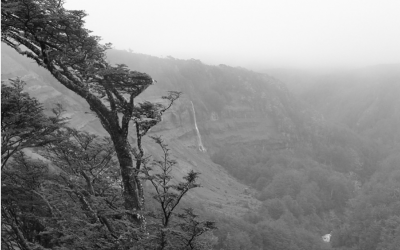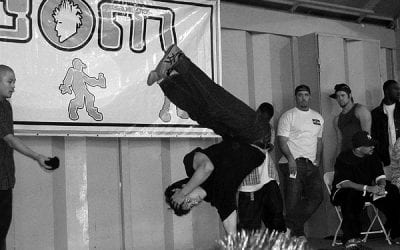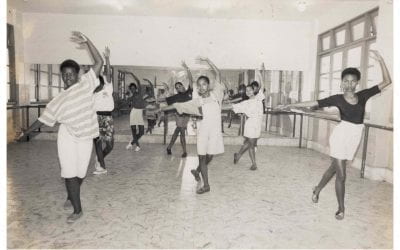Tango! Dance the World Around
Global Transformations of Latin American Culture
I am passionately interested in tango and profoundly ignorant about it. When I came to the Humanities Center at Harvard two years ago, I knew that at last I had an opportunity to direct my passion towards overcoming my ignorance. This is the personal motivation behind “Tango! Dance the World Around: Global Transformations of Latin American Culture”—our October 26 and 27 tango conference, co-sponsored by the Humanities Center, the Radcliffe Institute for Advanced Study, and the David Rockefeller Center, with the generous support of the Consulate General of Argentina.
My first experience of tango was in Bombay when I heard it on grainy, scratchy records. My father greatly loved tango, both to dance to and to listen to, and he had purchased these records in the 1930s or 40s. I heard them as a child in the 60s, and I was completely captivated. I can’t say precisely why, as I can’t put myself back into the mind of a child, but I believe it was the music’s combination of strength and fragility. I couldn’t understand the lyrics, but I could feel the music intensely.
Early in 2004, as the senior humanities advisor to Dean Drew Faust—now President Faust—I collaborated with Radcliffe in organizing a conference on cultural citizenship. At that time, I remarked that we should do something together on tango because tango is an extraordinarily popular dance and musical form with a fascinating social and political history that is translated across the world in a remarkable range of art forms and media. There is popular dance tango; there are great art works that incorporate tango; there is cinema that focuses on tango; there is tango as classical music—thanks in part to Yo-Yo Ma, who speaks at our conference; there is tango in Paris, Tokyo, Bombay, and Boston as well as Buenos Aires—thus our title “Dance the World Around” and our subtitle “Global Transformations of Latin American Culture.”
Tango is about nostalgia, the nostalgia for one’s country, about migration. Tango is about emerging from lack of privilege and expressing one’s passion for life in that context. Tango is about gender. Tango is deeply embedded in histories of urban poverty, social marginalization, and masculine authority.
I may not have conveyed all that information to then-Dean Faust, but my enthusiasm appears to have been contagious. Radcliffe every year stages a major conference. They did one last year on food. They’ve done one on war and another on money. They eagerly signed on to “Tango!”
That was the origin of a conference that addresses issues of gender, class, Latin American culture and its exportation to other countries, translations and transformations of a vital cultural form. It takes up all those issues, puts them together, and gives them to us in a way that is both pleasurable and informative.
I originally spoke about tango to Drew Faust in terms of a Radcliffe conference. A tango conference became even more relevant to me when I became director of the Humanities Center. The main role of the Humanities Center is to bring together colleagues from different departments, disciplines, and divisions of the university into conversations that combine academic expertise with intellectual passion.
I thought tango would be a splendid way of connecting the David Rockefeller Center for Latin American Studies, and the people who are associated with DRCLAS, with Radcliffe, with the Humanities Center, with the performing arts at Harvard. We would be able also then to link up literary scholars, musicologists, urban historians, sociologists, dancers, and musicians. It is our great good fortune to have Yo-Yo Ma participate fully in this conference and be an advisor who sent us in many interesting directions, both intellectually and aesthetically. His conversation with the composer Osvaldo Golijov is no doubt be a highlight of the conference.
“Tango!” explores the issues I’ve discussed above, looking at the local contexts of performance while, at the same time, posing larger questions of cultural transmissions. We are asking why tango has achieved such a remarkable success as a global metaphor. We are looking at what gives it the capacity to infuse diverse national and regional contexts across the globe with the spirit of Latin American performance. To help us answer these questions, lectures and panels will explore such topics as “Tango and Literature: Borges and Tango,” “Tango as a Cultural Form: Music, Dance, Film,” and “Tango as Politics: Gender, Class, and Urban Life.”
The tango conference kicks off a program funded by the Mellon Foundation at the Humanities Center, which concentrates on “the regional and the global.” Our hope is that every year we will focus on a particular region, explore the arts, the culture, the economics, the history of that region. We thought it would be wonderful to begin our engagement with Latin America with the tango conference. Through the year, it will be followed by other events focusing on Latin America. The tango conference from that perspective is a gateway for a range of collaborative, interdisciplinary events on the Latin American region, on connections within Latin America, and connections between Latin America and the rest of the world.
For me, the tango is both personal and political, both regional and global. I probably first saw tango performed in early films made about the life of Carlos Gardel, although I had heard the music already on my father’s records. Carlos Gardel, the most famous of tango artists, was born on the shore of Río de la Plata; both Argentina and Uruguay claimed his birthplace. He died in a tragic plane crash in Medellín, Colombia. What better symbol could there be for an impassioned music that is indeed world music?
Homi K. Bhabha is Director of the Humanities Center and Anne F. Rothenberg Professor of the Humanities at Harvard University. He is also Senior Advisor for the Humanities at the Radcliffe Institute for Advanced Study.
Related Articles
Editor’s Letter: Dance!
We were little black cats with white whiskers and long tails. One musical number from my one and only dance performance—in the fifth grade—has always stuck in my head. It was called “Hernando’s Hideaway,” a rhythm I was told was a tango from a faraway place called Argentina.
Brazilian Breakdancing
When you think about breakdancing, images of kids popping, locking, and wind-milling, hand- standing, shoulder-rolling, and hand-jumping, might come to mind. And those kids might be city kids dancing in vacant lots and playgrounds. Now, New England kids of all classes and cultures are getting a chance to practice break-dancing in their school gyms and then go learn about it in a teaching unit designed by Veronica …
Dance Revolution: Creating Global Citizens in the Favelas of Rio
Yolanda Demétrio stares out the window of our public bus in Rio de Janeiro, on our way to visit her dance colleagues at Rio’s avant-garde cultural center, Fundição Progresso. Yolanda is a 37-year-old dance teacher, homeowner, social entrepreneur and former favela (Brazilian urban shantytown) resident. She is the founder and director of Espaço Aberto (Open Space), an organization through which Yolanda has nearly …




